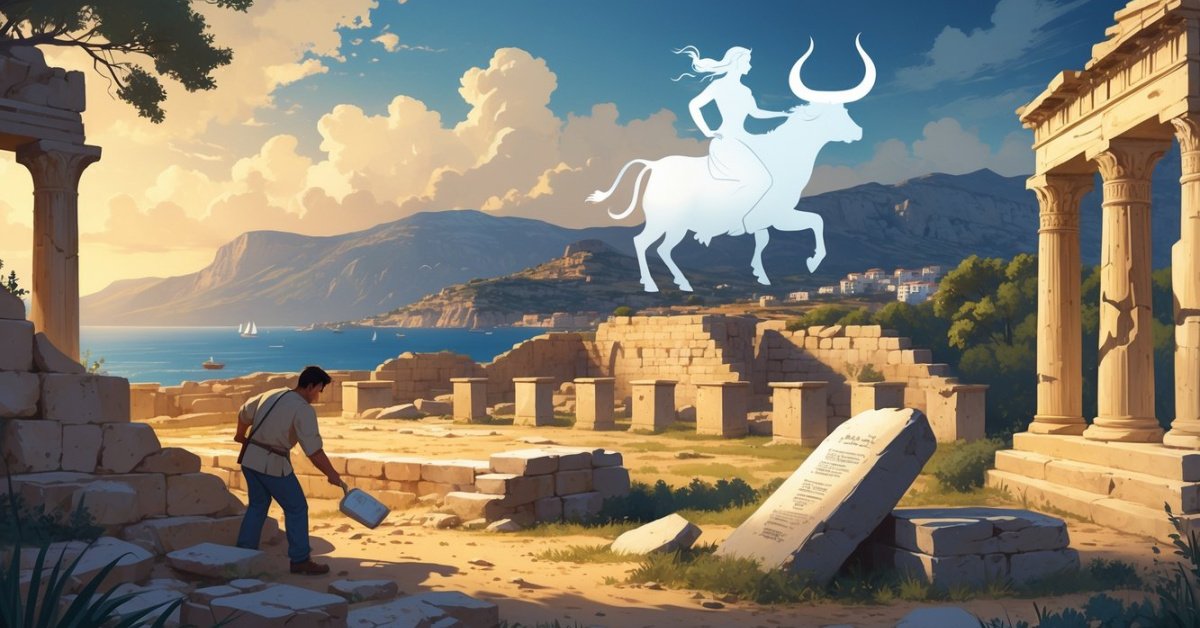Congo-Brazzaville, also called the Republic of the Congo, sits in Central Africa. Thick rainforests, winding rivers, and ancient cultures fill the country.
Some of its biggest historical mysteries, like stories of hidden creatures and unexplained events, have sparked curiosity for generations. This region holds secrets that remain unsolved and keeps people wondering what might be beneath its dense jungle canopy.
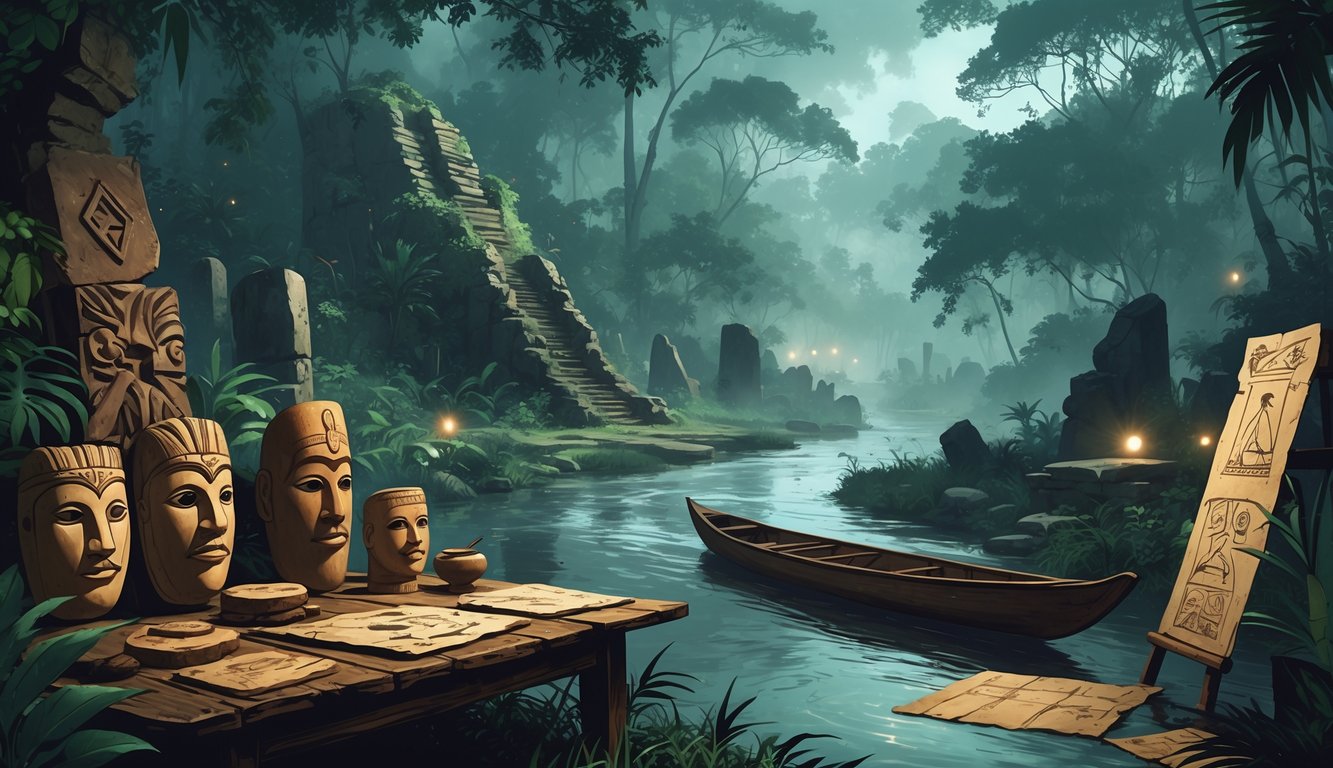
From tales of mysterious animals like the rumored Mokele-mbembe in the Likouala region to the puzzles of ancient civilizations, Congo-Brazzaville fascinates explorers and locals alike. The country’s rich history and natural wonders help these legends and mysteries grow.
Whether it is the allure of Congo’s vast rainforest or the mysterious stories passed down through generations, intrigue fills this part of Central Africa. These mysteries invite anyone with a sense of adventure to look deeper into the unknown.
The Lost Kingdom of Kongo
The Kingdom of Kongo was once a major political and cultural power in Central Africa. Its story includes strong leadership, contact with European explorers, and a collapse that still raises questions.
Origins and Rise
The Kingdom of Kongo began around the late 14th century. A leader named Lukeni lua Nimi likely founded it.
It was located between the Congo River and the Atlantic Ocean. The kingdom covered parts of what are now Angola, the Republic of the Congo, and Gabon.
Kongo was not a single city but a group of communities united under the king, called the Manikongo. The kingdom organized itself with provinces and local rulers loyal to the Manikongo.
Local traditions shaped leadership and social life. Trade played a huge role in Kongo’s rise.
The kingdom benefited from its location. It acted as a link for goods moving between inland Africa and the Atlantic coast.
Leaders managed resources like ivory, textiles, and pottery. This helped Kongo grow in power and influence.
European Encounters
Portuguese explorers arrived in the late 15th century. They made contact with the Kongo Kingdom in 1483.
They began trading European cloth, tools, and firearms for local products like ivory and copper. Portuguese influence grew as they introduced Christianity and European customs.
The Manikongo converted to Christianity and sent ambassadors to Europe. However, the Portuguese soon became interested in the region’s people, and the transatlantic slave trade started.
Kongo’s leaders tried to control the impact of European colonization. They struggled to manage demands for enslaved workers.
This period marked the beginning of big changes and challenges for the local kingdom and for the whole Congo region.
The Fall and Its Enigmas
The fall of the Kingdom of Kongo still puzzles historians. By the 17th century, Kongo was weakened by internal conflict, European interference, and the growing slave trade.
The Battle of Mbwila in 1665 was a key event. Portuguese forces defeated Kongo’s army and killed the reigning Manikongo.
After this defeat, Kongo split into smaller states. Central control never returned.
The exact reasons for the kingdom’s collapse remain unclear. The interactions between local leaders, the pressures from European colonization, and shifts in trade all played a role.
Many historical records were lost. Some details about Kongo’s last days may never be fully discovered.
The Mysterious Congo River
The Congo River is one of Africa’s most important waterways. Its natural beauty, incredible biodiversity, and deep history have led to many questions and mysteries.
Ancient Waterways
The Congo River stretches over 4,700 kilometers. It is the second-longest river in Africa.
It travels through dense rainforest in the Congo Basin. The river forms lifelines for local communities and wildlife.
Archaeologists believe that the river has supported human life for thousands of years. Ancient peoples traveled, traded, and built settlements along its banks.
Some carved mysterious symbols into rocks near the river. These symbols remain unexplained today.
Rare fish and plant species live in the river’s unique habitats. Many of these species exist nowhere else.
The river’s flow and shifting banks make it hard for scientists to explore ancient sites along its edges.
Unexplored Depths
The Congo River is the world’s deepest river, with some sections more than 220 meters deep. Fast currents and deep channels make research dangerous and expensive.
Scientists believe unknown animal life may live beneath the surface. Some discoveries include strange, blind fish and crustaceans adapted to living far below sunlight.
The extreme depth and darkness create conditions that may hide more mysteries. Researchers use special equipment to map underwater features.
Much of the river’s floor remains a mystery. Efforts to reach these areas often reveal new habitats and sometimes new species, adding to the Congo River’s reputation as one of the most mysterious rivers in the world.
River Legends
Stories about the Congo River have been passed down for generations. One famous legend is about a creature called Mokele-Mbembe.
Local people describe it as a large, water-dwelling animal, sometimes compared to a dinosaur. These stories attract explorers, scientists, and adventurers from around the world.
Some believe the tales are based on unknown animals that live deep in the Congo Basin. Others think the legends are local folklore or linked to the unexplored parts of the river.
There are also tales about spirits and powerful forces within the river. Myths and legends, like the Mokele-Mbembe, help keep the sense of wonder and mystery alive along the Congo’s banks.
Colonial Shadows and Secret Histories
Congo’s past is shaped by deep marks left by European colonizers, harsh rule, and the hunt for rubber and ivory. Its colonial history is full of unsolved mysteries, missing facts, and dark secrets that still affect Congo-Brazzaville today.
The French Colonization
French colonization began in the late 19th century. Explorers and military leaders moved inland from the coast.
French rule led to the creation of the French Congo, which later became part of French Equatorial Africa. The colonial government set up new borders and forced its own systems of law, taxes, and language.
Villages were often split apart or combined for easier control. French-appointed officials sometimes replaced local chiefs, causing tensions that remain today.
Many Congolese were forced to build roads, harvest raw materials, and serve French interests. French colonization changed the region’s social structure and left behind lasting cultural and economic problems.
Important details are still missing about how some regions were taken over and how local leaders responded. For a broader look, see how colonial rule shaped modern society in Congo-Brazzaville.
The Congo Free State Mystery
Before French Congo, King Leopold II of Belgium claimed a large part of central Africa as the Congo Free State. The International African Association, which was supposed to help local people, was actually a front for Leopold’s control and personal gain.
This period saw mass killings, forced labor, and the loss of entire communities. Records of how many people died or disappeared are unclear even today.
Historians still argue about the exact size and scope of the human toll. The legacy of the Congo Free State remains one of Africa’s darkest colonial chapters.
Many mysteries—including reports of hidden graves and lost villages—have never been fully solved.
The Force Publique and Belgian Rule
The Belgians created the Force Publique, a colonial police and military force. Its job was to collect taxes and rubber, but it became known for cruelty and violence.
Many soldiers in the Force Publique were African, but European officers led them. They enforced harsh quotas.
Failing to meet quotas often meant physical punishment or death. Villages faced threats, kidnappings, and attacks from the Force Publique.
Many survivors kept their suffering private out of fear. Stories exist about officers taking bribes, secret uprisings, and local resistance.
Some facts remain hidden because officials destroyed records or lied in reports. Experts still study the true impact of the Force Publique’s actions during the colonial period in Congo.
Rubber, Ivory, and Exploitation
The demand for rubber and ivory in Europe and America caused huge suffering in Congo. French and Belgian rulers forced people to gather these valuable resources.
Large areas of forest were cleared, and many animals were killed for export. People who failed to meet rubber quotas faced beatings or worse.
Whole families and villages were sometimes held hostage until enough rubber or ivory was delivered. Economic exploitation changed traditional ways of living and caused hunger and illness.
Export figures from the colonial era are controversial, with missing numbers and evidence of resources being smuggled out. These harsh practices left Congo with lost wildlife and long-term social and economic hardship.
For a detailed look at these impacts, read more about Congo’s colonial exploitation of natural resources.
Legendary Explorers and Unsolved Expeditions
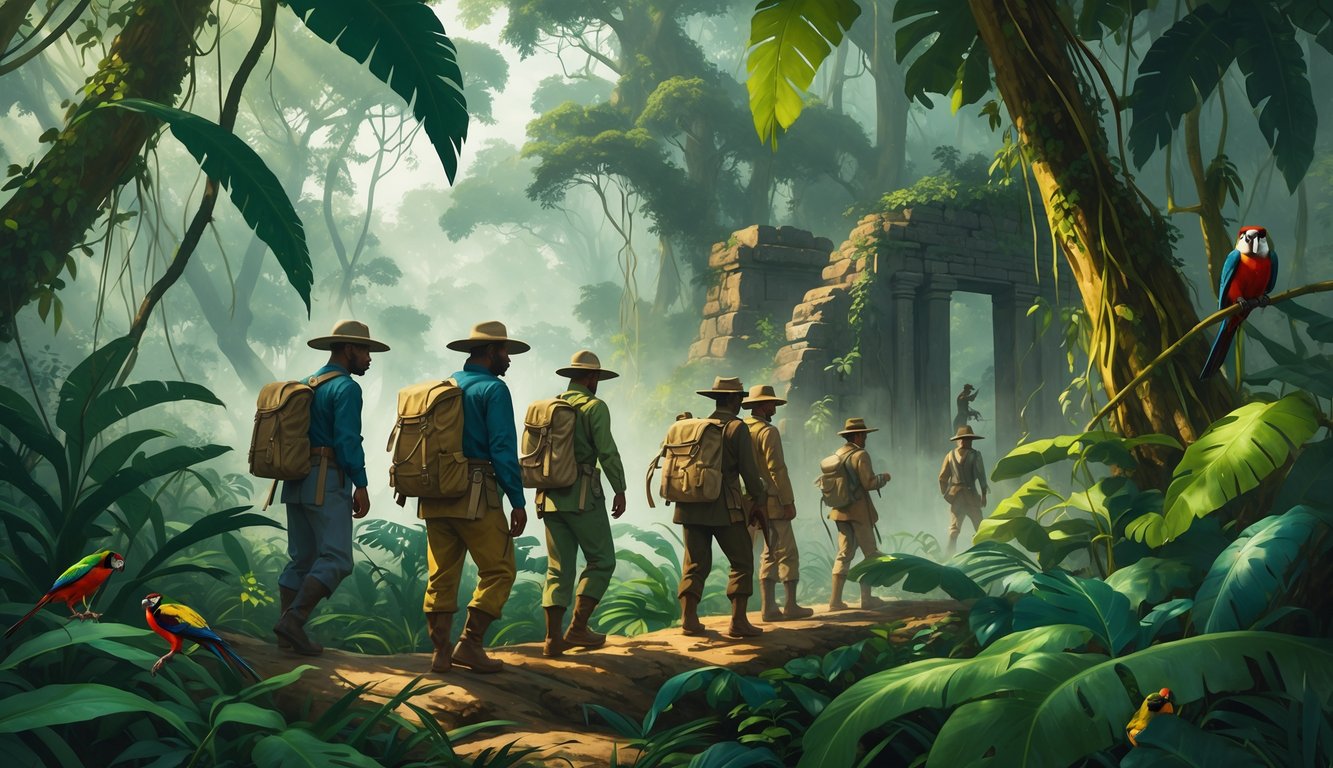
The Congo has seen famous explorers cross its forests and rivers. They left behind stories full of questions and mysteries.
Each explorer brought new discoveries and faced challenges that shaped history. Their journeys left puzzles that remain today.
Pierre Savorgnan de Brazza’s Puzzles
Pierre Savorgnan de Brazza was a French-Italian explorer known for his expeditions in Central Africa. He gave his name to Brazzaville, the capital of Congo.
His journeys focused on peace and cooperation with local people. This set him apart from many other explorers in the region.
Brazza signed treaties with local leaders and helped establish French influence in the Congo. Some records of his travels, deals, and actions remain unclear.
Historians still debate whether he always acted out of kindness or sometimes used tough tactics. After his death, suspicions arose that the French government hid truths about his work.
Some details about his final expeditions and the full impact of his agreements in Congo remain a mystery. Questions about his motives and the real stories behind his adventures continue to interest people and researchers.
David Livingstone’s Journey
David Livingstone was famous for his explorations in Africa during the 1800s. He is often known for his time in southern and eastern Africa, but his path crossed areas near the Congo River.
Livingstone searched for the source of the Nile and mapped unknown regions. He often traveled alone or with just a few companions.
Many parts of his journey remain a mystery. He faced challenges like disease, difficult terrain, and long stretches without contact from the outside world.
Some of the journals and maps from these trips are incomplete. Historians still do not know everything about Livingstone’s final journeys through the dense Congo forests.
His findings and what he truly experienced as he traveled have gaps, leaving room for questions and debate. More on other mysterious expeditions in history can be found at this collection of unsolved historical mysteries.
Henry Morton Stanley’s Legacy
Henry Morton Stanley became known for his journey to find David Livingstone and for exploring the Congo River. His expeditions helped map the Congo and connect the region with the outside world.
Stanley opened the Congo to European interests, but he also led harsh campaigns. He faced dangers like river rapids, hostile wildlife, and resistance from local groups.
People have debated Stanley’s treatment of local people and his ties to colonial rule for many years. Some stories from his travels remain uncertain, especially details about his routes and the real impact of his actions.
Debates about his methods and findings keep his legacy important and controversial among explorers linked to the Congo. For more on the journeys of explorers, see these legendary expeditions.
Enigmatic Figures in Congo’s Political History
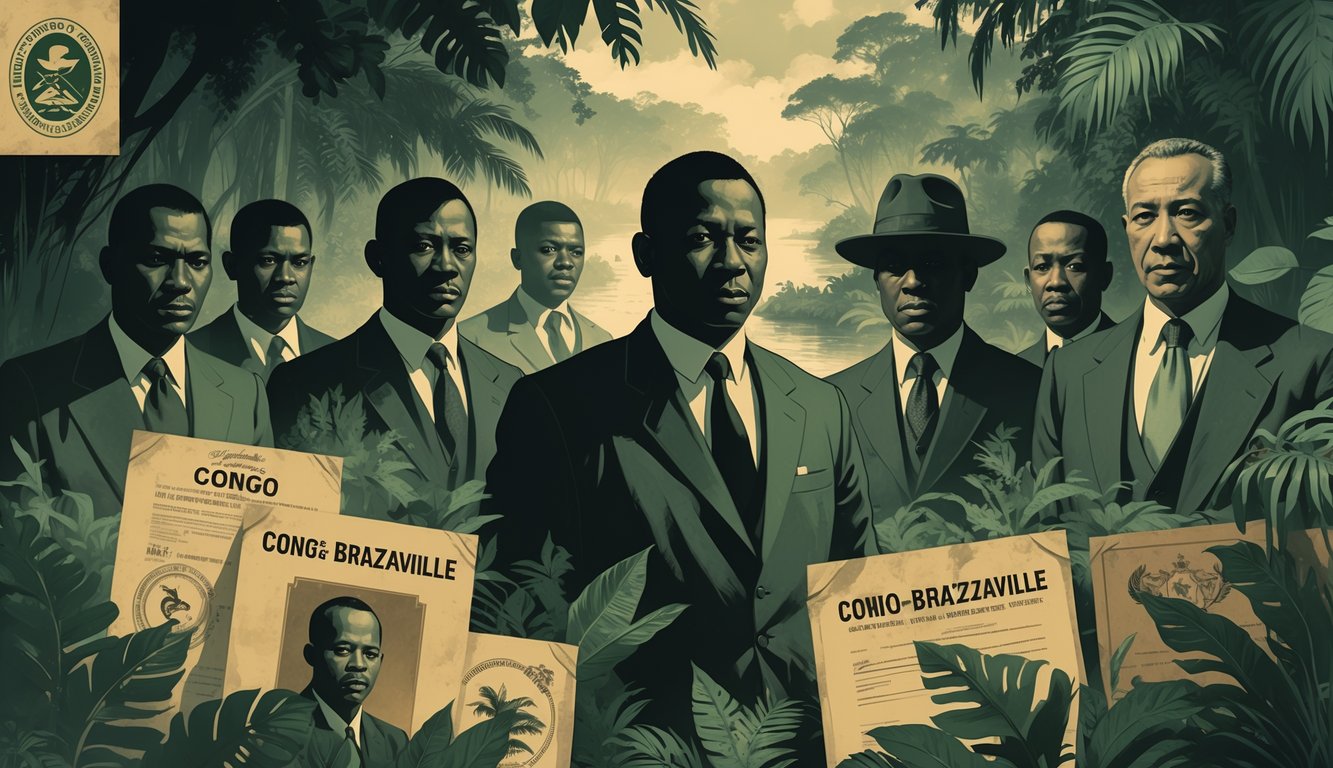
Congo-Brazzaville’s history features leaders whose actions led to major turning points and lasting changes. Their personal stories reveal deep struggles with political instability and explain why some mysteries about their rule remain.
Fulbert Youlou’s Rise and Fall
Fulbert Youlou became the first president of Congo-Brazzaville after independence in 1960. Before politics, he was a Roman Catholic priest, making him a unique figure in African history.
Youlou’s leadership style showed strong control and efforts to keep peace among many ethnic groups. His government soon faced accusations of corruption and favoritism.
Political enemies increased as Youlou pushed for a one-party system. In August 1963, strikes and protests erupted in Brazzaville.
The military refused to support Youlou, and pressure forced him to resign. Today, it is still unclear who truly led the final push against him and what deals happened behind the scenes as he left power.
Some analysts suggest foreign governments may have played hidden roles, but the details remain unclear. For more on these events, visit this page on famous historical figures of Congo.
Alphonse Massamba-Débat’s Era
Alphonse Massamba-Débat became president after Youlou’s departure. His government promoted socialist policies and tried to move away from Western influence.
Massamba-Débat’s era brought bold reforms like nationalizing industries and shifting economic power. He faced opposition from the military and political groups who thought his changes were too radical or too fast.
Power struggles and rumors of coup plots surrounded his presidency. In 1968, the military forced him out of office.
Massamba-Débat was later placed under house arrest. Questions remain about whether his allies turned on him or if foreign groups supported his enemies.
Marien Ngouabi’s Assassination
Marien Ngouabi took over the presidency after Massamba-Débat’s removal. He was a military officer who helped create the Congolese Workers’ Party and promoted a Marxist-Leninist state.
Ngouabi’s government watched for traitors and dealt harshly with suspected conspirators. On March 18, 1977, someone assassinated Ngouabi inside his residence.
The murder remains unsolved. Officials and military commanders faced accusations, but the full truth never came out.
Some believe a rival group inside the army planned it, while others point to outside involvement. After the assassination, violence spread through the country.
Quick trials and executions followed, but the real planners are still unknown. The assassination led to more power struggles that continued to shape Congo-Brazzaville’s politics.
Pascal Lissouba and Turmoil
Pascal Lissouba was elected president in 1992. For a short time, the country had a multi-party system.
His presidency became known for deep political divisions and violence. Groups loyal to Lissouba and his rivals fought across major cities.
Lissouba’s government used militias and targeted opponents. In 1997, rebel forces led by Denis Sassou Nguesso captured Brazzaville after months of fighting.
Lissouba fled the country, and Sassou Nguesso returned to power. The causes behind Lissouba’s failure to keep control are complex.
Some believe he underestimated his rivals, while others point to international actors with their own interests.
Political Upheaval and Civil War Mysteries
Congo-Brazzaville’s history includes instability, civil wars, and arguments about its government and leadership. The search for democracy often clashed with strong political control and corruption.
Origins of Instability
After independence from France in 1960, Congo-Brazzaville faced rapid leadership changes and weak institutions. Military leaders and politicians fought for power, leading to political repression.
Coups and overthrows marked the country’s early years. Both bloodless and violent takeovers confused citizens about who really led the country.
Repeated disruptions kept democracy out of reach. Officials often used the military to control the country instead of letting people decide through elections.
Many wonder why Congo-Brazzaville never settled into peaceful, democratic rule, even after independence. Endless cycles of distrust and corruption made honest elections rare.
1990s Civil Wars
In the 1990s, Congo-Brazzaville suffered its most destructive period. Civil wars broke out between groups supporting different presidential candidates.
Fighting erupted in towns and cities, forcing thousands to flee. Leaders used private militias to fight for control.
Foreign involvement made things worse, with neighboring countries like Angola sending troops. During this chaos, political repression increased, and ordinary people lost their voice in government.
The 1997 conflict ended with Denis Sassou Nguesso returning to power with military help. This story is still discussed as the Congo Brazzaville Civil War.
Questions remain about who really benefited from these fights and whether true democracy was ever the goal.
Constitutional Debates
Arguments about the constitution are central to Congo-Brazzaville’s political life. Leaders have changed the law to extend their time in office or block others from winning elections.
These debates often hide a struggle between real democracy and a system that protects those in power. Opponents say the government uses constitutional changes to keep rivals out and allow more repression.
Many people wonder if the constitution protects their rights or simply serves the powerful. Corruption and lack of transparency make it hard for citizens to trust that change will happen.
Independence and Unanswered Questions

The Republic of Congo’s journey to independence included political change, uncertainty, and global interests. Debates continue about what happened behind the scenes and how major decisions were made.
Path to Independence
In the late 1950s, Congo-Brazzaville moved toward independence from France. Nationalist movements grew quickly, and local leaders demanded self-government.
Negotiations with France led to independence on August 15, 1960. Details about these early talks remain unclear, including whether all local voices were heard.
Some historians debate how much the Congolese people shaped their new government and if outside influence played a hidden role. Different political parties emerged, often with conflicting visions for the new nation.
The process moved quickly, and some decisions happened with little public input. This left questions about how united the people truly were at independence.
More information can be found in the history of the Republic of Congo.
Transition Challenges
After independence, the Republic of Congo faced serious challenges. The country had little experience with self-governance, and many institutions stayed under outside control.
Leaders struggled to create a stable government. Tensions between political groups led to frequent power shifts and violent clashes.
These conflicts often came from disagreements over leadership and resource management. Some documents from this era are missing or incomplete, leaving unanswered questions about deals made behind closed doors.
Outside governments may have affected early decisions. The roots of political instability remain an important topic for historians.
Role of the United Nations
The United Nations got involved soon after independence. Their goal was to keep the peace and support the new country.
The exact role of the UN during Congo’s early years is still debated. Some believe the UN helped reduce violence, while others say their efforts were limited or misdirected.
Records about UN meetings are sometimes incomplete, making it hard to know what really happened. The question of whether the UN did enough, or acted too late, still comes up in discussions about Congo’s history.
Their involvement shapes how the world remembers Congo-Brazzaville’s struggle for self-rule.
Economic Puzzles: Oil, Minerals, and Foreign Interests
Congo-Brazzaville’s landscape is rich in oil, minerals, and valuable timber. Major economic questions remain about who controls these resources and how foreign companies shape the country’s wealth.
Oil Reserves and Disputes
Congo-Brazzaville’s economy depends on oil. Petroleum exports make up nearly 90% of exports, mostly from offshore fields.
Locals often ask how much oil money stays in the country, as profits and ownership are complicated by deals with foreign companies. Disputes often arise over which companies control new drilling areas and who benefits most.
The government and foreign operators argue about payment terms, taxes, and environmental impacts. Many citizens feel left out of decisions, leading to calls for transparency.
Oil wealth has not always improved living conditions. Control of this key resource remains a mystery for many in Congo-Brazzaville.
More details on oil and exports can be found at Mining in the Republic of the Congo.
Timber and Resource Controversies
Timber from Congo-Brazzaville’s forests is highly valued. Logging brings in money but triggers debate about illegal harvesting and weak oversight.
Complex rules sometimes let powerful companies cut more trees than allowed, harming both communities and the environment. Some areas face deforestation, threatening wildlife and people who depend on the forest.
Efforts to balance economic gain with environmental protection continue. Disagreements over forest management and money sharing keep the issue in the spotlight.
Foreign Investment Mysteries
Foreign investment shapes much of Congo-Brazzaville’s resource sector. Oil, mining, and timber projects often depend on outside money.
However, deals are sometimes made in secret. The full impact on the country is not always known.
Contracts with foreign companies can be very complex. Ordinary citizens often struggle to know who benefits most.
Foreign interests may take large profits while the local economy remains weak. Poverty and lack of infrastructure continue despite these large investments.
People often question the relationship between Congo-Brazzaville and foreign investors. Changes in world prices can quickly affect daily life.
Information on these partnerships and challenges is discussed further at The Republic of Congo’s Mineral Policies.
Hidden Human Stories and Cultural Mysteries
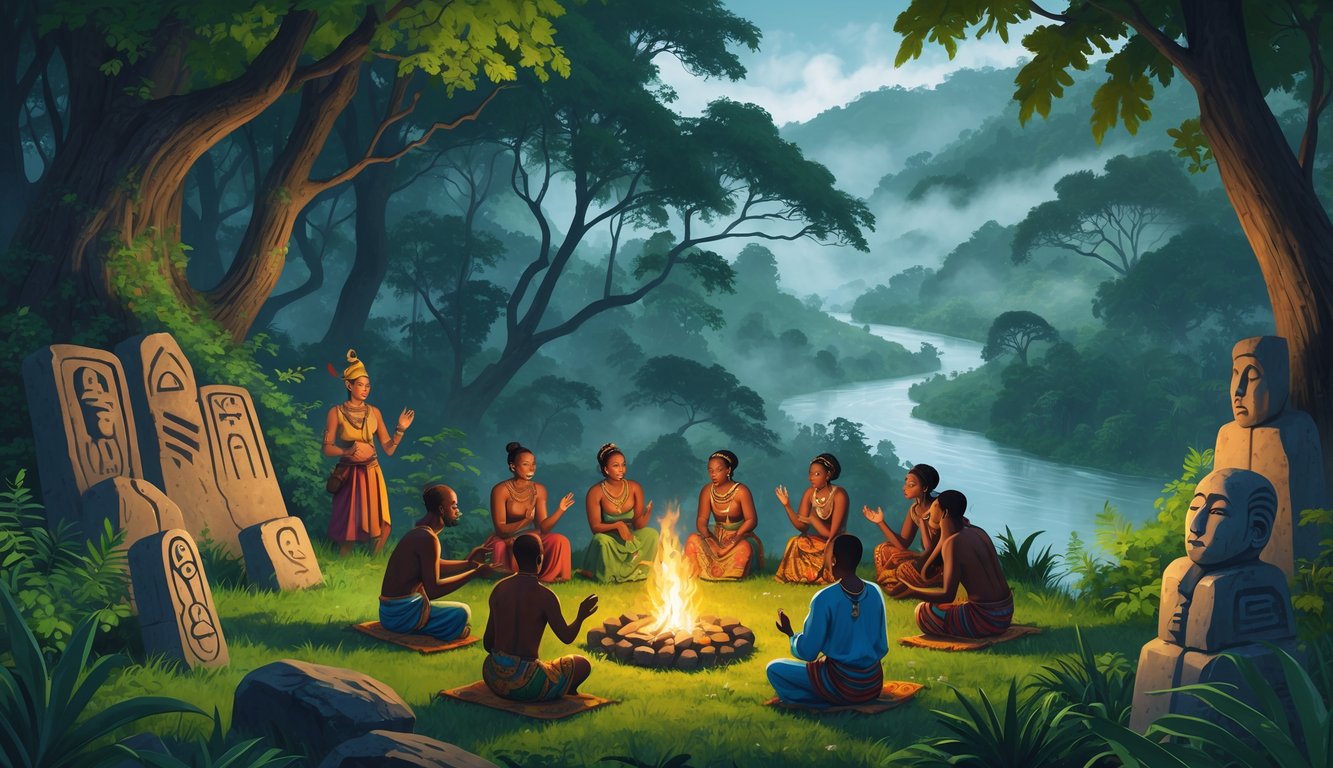
Congo’s past is filled with deep human struggles and unique traditions. Many voices from the region are rarely heard outside the country.
These stories touch on the slave trade, living indigenous cultures, and creative expression through music and art.
Slave Trade and Legacy
The slave trade deeply affected Congo, especially around Brazzaville. From the 15th to the 19th centuries, traders took thousands of Congolese people from their homes and forced them onto ships along the coast.
Many families were separated forever. Even today, the effects of this tragic history are still visible.
Old trading posts and colonial buildings stand as silent witnesses. Some communities continue to struggle with poverty and human rights issues because of the long-lasting damage caused by displacement and exploitation.
French colonial rule added another layer of suffering. Forced labor, harsh punishments, and a lack of freedom shaped daily life for many Congolese people.
These experiences left scars on families and entire regions. They influenced culture, language, and relationships with outsiders.
Pygmies and Indigenous Peoples
Congo is the ancestral home of several Pygmy groups, such as the Aka and the Twa. These indigenous peoples know the forest well and have a unique way of life.
Despite their skills and traditions, Pygmies have often faced discrimination and marginalization. Many Pygmy families still rely on hunting, gathering, and small-scale farming.
Storytelling plays a central role in their communities. They pass down history and lessons through spoken word.
Efforts continue to protect their rights. Land loss and pressures from modern society threaten their survival.
Human rights groups help these communities maintain their traditions. They also work to ensure equal access to education, healthcare, and land.
Music, Art, and Oral Traditions
Music and art are at the heart of Congolese culture. In Brazzaville, rhythms like soukous and rumba mix African and French influences.
Musicians use songs to share news, tell stories, or call for justice. Traditional art uses wood, beads, and woven materials.
Masks and sculptures are common in ceremonies and rituals. They link people to their ancestors.
Art and music help resist fading cultural identity and protest injustice. Oral traditions are powerful in Congo.
Elders tell myths, legends, and history during nightly gatherings. These spoken stories help communities remember their roots.
They hold knowledge not written down anywhere else. Oral traditions play a key role in keeping Congolese culture alive.
Natural Wonders, Conservation, and Lost Biodiversity
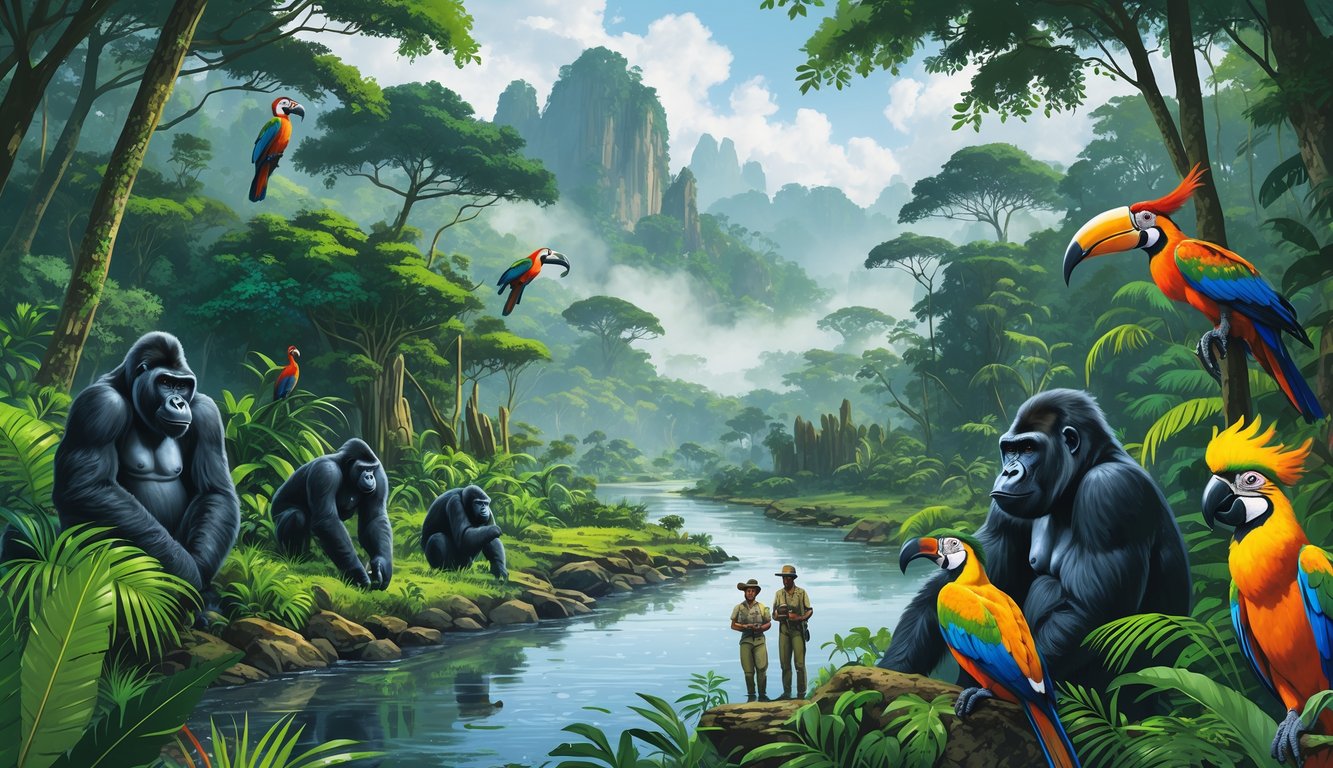
The Republic of Congo is home to some of the richest rainforests in Africa. The country holds an incredible variety of plants and animals.
These natural wonders face unique challenges. Disappearances and urgent conservation efforts add to the mysteries.
Rainforest Mysteries
Congo’s rainforests are some of the most diverse and mysterious places on Earth. These forests stretch for thousands of miles with tall trees, thick vines, and rare flowers.
They are vital for climate stability. The forests produce oxygen and store carbon.
Many species in these forests live nowhere else in the world. The Likouala region is known for its hard-to-reach swamps and rivers that hide unusual creatures.
Local stories speak of cryptids like Mokele-mbembe, a creature some believe still lives deep in the wild. Scientists continue to discover new plants and animals in these forests.
Parts of the rainforest remain largely unexplored. More about these forests and their mysteries can be found at Exploring the Biodiversity of Congo.
Wildlife Disappearances
Congo once had great numbers of elephants, gorillas, and other iconic animals. In recent decades, many of these creatures have disappeared from the wild.
Poaching and habitat loss from logging and farming have caused much of this decline.
Key Wildlife at Risk:
- Forest elephant
- Western lowland gorilla
- African grey parrot
Some local people remember seeing certain animals decades ago that are now missing from entire regions. Conservation groups note that losing these animals affects both nature and local communities.
Observers have shared concern for these disappearances at places such as Top 10 Natural Wonders of the Congo.
Conservation Challenges
Conservation in Congo faces tough hurdles. Illegal hunting, a shortage of trained scientists, and weak law enforcement make it hard to protect rare species and habitats.
Many protected areas do not have enough people and funding to watch over forests and wildlife. New organizations now train local scientists and park rangers.
Congo’s forests are important for local biodiversity. They also help fight global climate change, so losing them affects the whole world.
You can read more about conservation efforts and ongoing challenges at Understanding Conservation Policies in Congo and long-term survival of Congo’s biodiversity threatened by lack of local scientists.



